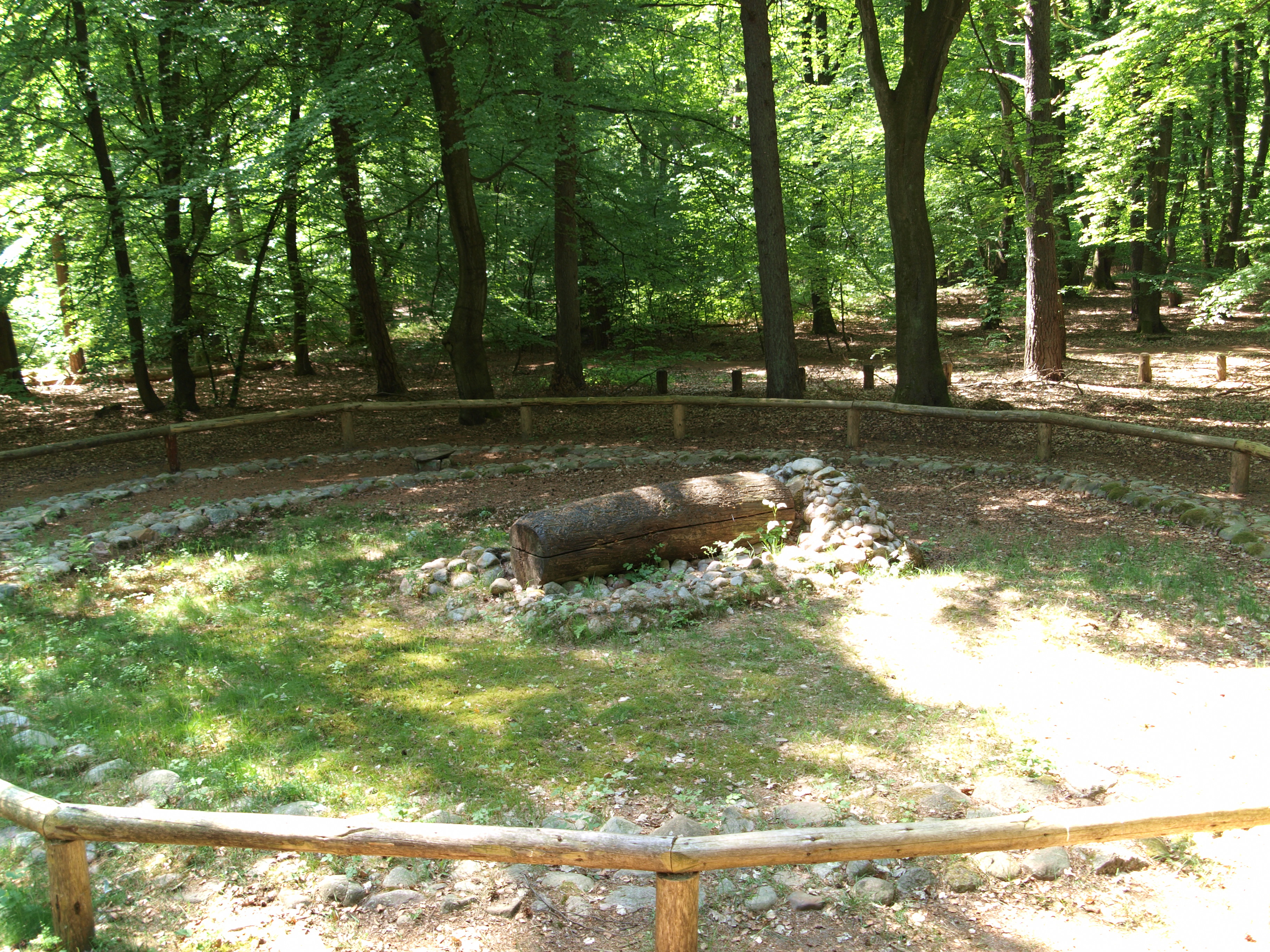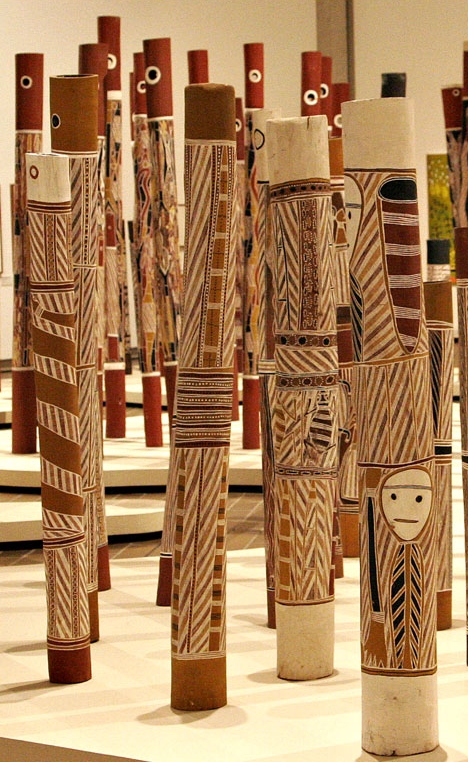Treetrunk coffin on:
[Wikipedia]
[Google]
[Amazon]


 A treetrunk coffin is a coffin hollowed out of a single massive
A treetrunk coffin is a coffin hollowed out of a single massive
on-line text
. in
 The hollow log coffin (also known as memorial poles, lorrkkon, ḻarrakitj, or ḏupun) has been used in burials of Yolngu and
The hollow log coffin (also known as memorial poles, lorrkkon, ḻarrakitj, or ḏupun) has been used in burials of Yolngu and


 A treetrunk coffin is a coffin hollowed out of a single massive
A treetrunk coffin is a coffin hollowed out of a single massive log
Log most often refers to:
* Trunk (botany), the stem and main wooden axis of a tree, called logs when cut
** Logging, cutting down trees for logs
** Firewood, logs used for fuel
** Lumber or timber, converted from wood logs
* Logarithm, in mathe ...
. Used for burials since prehistoric times over a wide geographic range, including in Europe, Africa, Asia and Australia.
History
Treetrunk coffins were a feature of some prehistoric elite burials over a wide geographical range, especially in Northern Europe and as far east as theBalts
The Balts or Baltic peoples ( lt, baltai, lv, balti) are an ethno-linguistic group of peoples who speak the Baltic languages of the Balto-Slavic branch of the Indo-European languages.
One of the features of Baltic languages is the number ...
, where cremation
Cremation is a method of final disposition of a dead body through burning.
Cremation may serve as a funeral or post-funeral rite and as an alternative to burial. In some countries, including India and Nepal, cremation on an open-air pyre is ...
was abandoned about the 1st century CE, as well as in central Lithuania, where elites were also buried in treetrunk coffins. The practice survived Christianisation
Christianization ( or Christianisation) is to make Christian; to imbue with Christian principles; to become Christian. It can apply to the conversion of an individual, a practice, a place or a whole society. It began in the Roman Empire, conti ...
into the Middle Ages
In the history of Europe, the Middle Ages or medieval period lasted approximately from the late 5th to the late 15th centuries, similar to the post-classical period of global history. It began with the fall of the Western Roman Empire ...
.
Examples by country
UK
The coffin in which the body of King Arthur, said to have been discovered atGlastonbury Abbey
Glastonbury Abbey was a monastery in Glastonbury, Somerset, England. Its ruins, a grade I listed building and scheduled ancient monument, are open as a visitor attraction.
The abbey was founded in the 8th century and enlarged in the 10th. It w ...
in 1191, was described by the contemporary chronicler Giraldus Cambrensis
Gerald of Wales ( la, Giraldus Cambrensis; cy, Gerallt Gymro; french: Gerald de Barri; ) was a Cambro-Norman priest and historian. As a royal clerk to the king and two archbishops, he travelled widely and wrote extensively. He studied and taugh ...
as being of a massive oak
An oak is a tree or shrub in the genus ''Quercus'' (; Latin "oak tree") of the beech family, Fagaceae. There are approximately 500 extant species of oaks. The common name "oak" also appears in the names of species in related genera, notably ''L ...
treetrunk. For Bronze Age
The Bronze Age is a historic period, lasting approximately from 3300 BC to 1200 BC, characterized by the use of bronze, the presence of writing in some areas, and other early features of urban civilization. The Bronze Age is the second prin ...
Britain, examples have been recorded at Wydon Eals, near Haltwhistle
Haltwhistle is a market town and civil parish in Northumberland, England, east of Brampton. It had a population of 3,811 at the 2011 Census.
Stone-built houses are a feature of Haltwhistle. It is one of two settlements in Great Britain which c ...
, and at Cartington, (formerly County Durham, now Northumberland
Northumberland () is a county in Northern England, one of two counties in England which border with Scotland. Notable landmarks in the county include Alnwick Castle, Bamburgh Castle, Hadrian's Wall and Hexham Abbey.
It is bordered by land ...
),"The Cartington Early Bronze Age burial was discovered in 1913 during ploughing operations. Beneath a block of stone was found an oak "trough" or tree trunk coffin, 1.67m (5 ft 6 in) long and 0.5 to 0.63m (20 to 25 in) wide. Some teeth and a cast of a leg bone in the clay filling were all the human remains. Other items included fragments of stitched calfskin, a drinking cup, and a flint scraper. Radiocarbon dating gave a date range 2400-2200 BCEon-line text
. in
Scotland
Scotland (, ) is a Countries of the United Kingdom, country that is part of the United Kingdom. Covering the northern third of the island of Great Britain, mainland Scotland has a Anglo-Scottish border, border with England to the southeast ...
, Yorkshire
Yorkshire ( ; abbreviated Yorks), formally known as the County of York, is a historic county in northern England and by far the largest in the United Kingdom. Because of its large area in comparison with other English counties, functions have ...
, East Anglia ( Liss, northeast Hampshire
Hampshire (, ; abbreviated to Hants) is a ceremonial and non-metropolitan county in western South East England on the coast of the English Channel. Home to two major English cities on its south coast, Southampton and Portsmouth, Hampshire ...
, for instance). In Yorkshire, " Gristhorpe Man", a well-preserved human of the second millennium BCE, who was found on 10 July 1834 under an ancient burial mound
Burial, also known as interment or inhumation, is a method of final disposition whereby a dead body is placed into the ground, sometimes with objects. This is usually accomplished by excavating a pit or trench, placing the deceased and objec ...
buried in a hollow oak tree trunk, is conserved at the Rotunda Museum
The Rotunda Museum is one of the oldest purpose-built museums still in use in the United Kingdom. The curved grade II* listed building was constructed in 1829 as one of the country's first purpose-built museums. Situated in the English coastal ...
, Scarborough Scarborough or Scarboro may refer to:
People
* Scarborough (surname)
* Earl of Scarbrough
Places Australia
* Scarborough, Western Australia, suburb of Perth
* Scarborough, New South Wales, suburb of Wollongong
* Scarborough, Queensland, su ...
. He was wrapped in an animal skin with a whalebone and bronze dagger
A dagger is a fighting knife with a very sharp point and usually two sharp edges, typically designed or capable of being used as a thrusting or stabbing weapon.State v. Martin, 633 S.W.2d 80 (Mo. 1982): This is the dictionary or popular-use de ...
and food for his journey.
Belgium
At the abbey of Munsterbilzen, Belgium, ten graves with massive treetrunk coffins were discovered in 2006.Egypt
The phenomenon was not restricted to regions where massive timber was abundant. In Egypt, the conservation of a 1st-century cypresswood coffin hollowed from a single log, from a burial at Touna El Gebel, has been described.Australia
 The hollow log coffin (also known as memorial poles, lorrkkon, ḻarrakitj, or ḏupun) has been used in burials of Yolngu and
The hollow log coffin (also known as memorial poles, lorrkkon, ḻarrakitj, or ḏupun) has been used in burials of Yolngu and Bininj
The Bininj are an Aboriginal Australian people of Western Arnhem land in the Northern Territory. The sub-groups of Bininj are sometimes referred to by the various language dialects spoken in the region, that is, the group of dialects known as Bi ...
peoples of Arnhem Land in the Northern Territory
The Northern Territory (commonly abbreviated as NT; formally the Northern Territory of Australia) is an Australian territory in the central and central northern regions of Australia. The Northern Territory shares its borders with Western Aust ...
of Australia for millennia. They vary in size: those made for a burial ceremony are large, while smaller logs may hold the bones of a person, to be kept by their family for some time. They can also represent the deceased person, with designs mirroring those painted on the body during the burial rites
''Burial Rites'' (2013) is a novel by Australian author Hannah Kent, based on a true story.
Background
Kent was given inspiration to write Burial Rites during her time as an exchange student in Iceland when she was 17, where she learnt the s ...
. Sometimes there is a small painted or carved hole near the top, provided to allow the deceased's soul to look out on the land. Traditionally, the log is that of the stringybark '' Eucalyptus tetrodonta'' which has been naturally hollowed out by termite
Termites are small insects that live in colonies and have distinct castes (eusocial) and feed on wood or other dead plant matter. Termites comprise the infraorder Isoptera, or alternatively the epifamily Termitoidae, within the order Blatto ...
s. The poles are painted with elaborate and intricate designs, which relate to the deceased's clan, and are believed to help guide the soul to its home, where spirits and ancestors would then recognise it.
In recent decades, the larrakitj have been created as artworks, and have been exhibited in many major Australian galleries. The National Gallery of Australia
The National Gallery of Australia (NGA), formerly the Australian National Gallery, is the national art museum of Australia as well as one of the largest art museums in Australia, holding more than 166,000 works of art. Located in Canberra in th ...
in Canberra holds an installation
Installation may refer to:
* Installation (computer programs)
* Installation, work of installation art
* Installation, military base
* Installation, into an office, especially a religious (Installation (Christianity) Installation is a Christian li ...
called the '' Aboriginal Memorial''. originally created in 1988.
China
Because hollowed trunks suggestdugout boat
A dugout canoe or simply dugout is a boat made from a hollowed tree. Other names for this type of boat are logboat and monoxylon. ''Monoxylon'' (''μονόξυλον'') (pl: ''monoxyla'') is Greek – ''mono-'' (single) + '' ξύλον xylon'' (t ...
s, such burials are sometimes described as boat burials. In Yanjinggou Developing Zone of Chengdu
Chengdu (, ; simplified Chinese: 成都; pinyin: ''Chéngdū''; Sichuanese pronunciation: , Standard Chinese pronunciation: ), alternatively romanized as Chengtu, is a sub-provincial city which serves as the capital of the Chinese pro ...
such a "boat burial" in a hollowed-out treetrunk found in 2006 was dated to the Warring States
The Warring States period () was an era in ancient Chinese history characterized by warfare, as well as bureaucratic and military reforms and consolidation. It followed the Spring and Autumn period and concluded with the Qin wars of conquest ...
Era (475–221 BCE); it contained copper objects, bronze weapons, pottery and lacquer wares, seeds and peach pits. Its burial was the most recent of eight burials in coffins hollowed out of single treetrunks one and a half metres in diameter, five meters in length, with tapered ends bow and stern.
References
{{DEFAULTSORT:Treetrunk Coffin Ancient Egyptian technology Chinese inventions Coffins Death customs English inventions